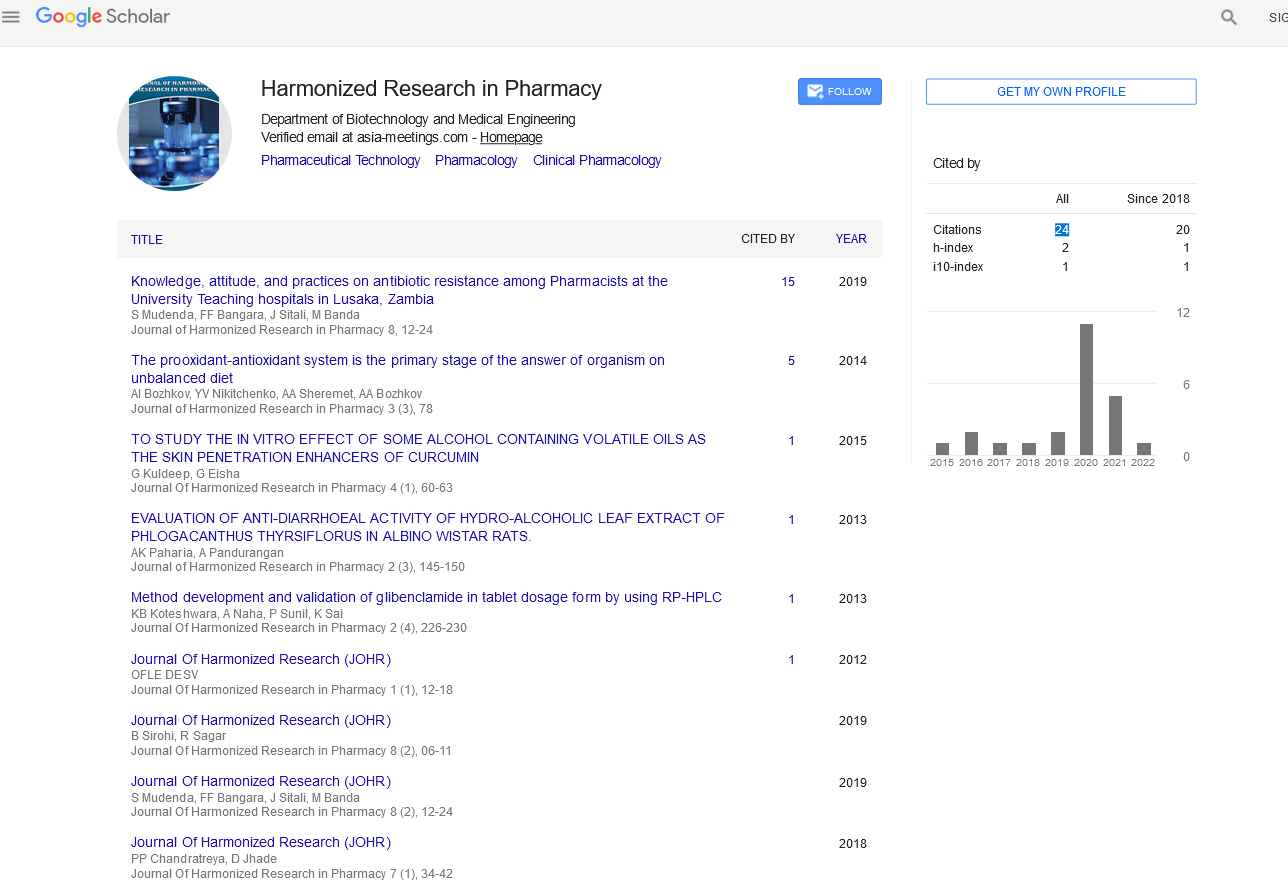Editorial - (2021) Volume 10, Issue 2
BRIEF NOTE ON BIO PHARMACEUTICS
Fabiani Zimmerman*Received: Dec 06, 2021
Editorial
Bio pharmaceutics studies the relationship between the physicochemical properties of a drug, the dosage form (drug) to which the drug is administered and the route of administration with respect to the rate and extent of systemic drug absorption. The importance of drug substances and drug formulations in the absorption of the drug into the site of action and in vivo distribution has been described as a series of events that precede the induction of the therapeutic effect of the drug. A general scheme is presented to explain this dynamic relationship. For example, gene-based cell biology is often at the forefront of biomedical and biomedical research and can be used to treat a variety of disorders for which other therapies are not available. In some jurisdictions, biologics are regulated through different channels than other small molecule drugs and medical devices. Bio pharmatics is a pharmacy that works with bio pharmacy. Bio pharmacy is a field of pharmacology dealing with bio pharmaceutics.
The main types of bio pharmaceutics are:
• Blood factors (factor VIII and factor IX)
• Thrombolytic agent (tissue plasminogen activator)
• Hormones (insulin, glucagon, growth hormone, gonadotropins)
• Hematopoietic growth factor (erythropoietin, colony stimulating factor)
• Interleukin-based products (interleukin 2)
• Vaccine (hepatitis B surface antigen)
• Monoclonal antibodies (various)
• Additional products (tumour necrosis factor, therapeutic enzymes)
Biopharmatics is made from living cells, while synthetic drugs are the product of a chemical process. Most synthetic drugs are small molecules. For example, the molecule of acetylsalicylic acid is composed of 21 atoms. In contrast, biopharmacy is usually 100 to 1000 times larger. The active ingredient of such drugs may contain 2000-25,000 atoms. Biopharmacy is much more complex in structure due to the formation of polymer chains with very different structures. Another feature of biopharmacy that distinguishes it from synthetic drugs is its limited susceptibility to digestive degradation and its ability to penetrate the intestinal epithelium. Therefore, it is usually given parenteral by direct injection rather than oral. Biopharmacy is also temperature sensitive and therefore requires a complex stabilization system. In contrast to synthetic drugs, biopharmacy has a much more complex mechanism of action. For example, interferon affects the expression of more than 40 genes. Due to this great complexity, it is difficult to determine the complete mechanism of action of these drugs. Moreover, unlike synthetic drugs, biopharmacy is potentially immunogenic. Even relatively small differences in the structure of the active ingredient can have a significant impact on the immunogenicity of the drug. Impurities related to the process can also be immunogenic. It is not enough to know what the drug does to the body. It is also important to know what the body is doing with the drug. Knowledge of the pharmacodynamics and pharmacokinetic properties of drugs and their metabolites in humans and animals is important for understanding their different effects between species and adjusting drug doses.
Plasma concentration of drug is a basic concept of pharmacokinetics. Based on drug protein binding, the concentration of free drug available in the circulation has a significant effect on dose calculation. Drug levels in plasma are balanced with some tissues in the body.
Conclusion
Due to its properties and many advantages over traditional drugs, biopharmacy holds great promise for disease control and prevention. Many new biopharmacy are being developed and may be ready for clinical use in the near future, but some scientific and regulatory issues remain unresolved. We hope that research on the discovery, production, application, prospects, and challenges of biopharmacy will produce fruitful results and have a significant impact on people. With constant efforts, all prospects will come true and ultimately the challenges will be overcome.

Google Scholar citation report
Citations : 147
Journal of Harmonized Research in Pharmacy received 147 citations as per google scholar report









